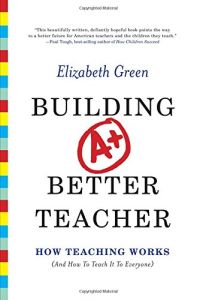Join getAbstract to access the summary!

Join getAbstract to access the summary!
Elizabeth Green
Building a Better Teacher
How Teaching Works (and How to Teach It to Everyone)
W.W. Norton, 2014
What's inside?
Teaching is a skill anyone can learn, but the quest requires devoted effort and time.
Recommendation
Great teachers are made and not born, according to former journalist Elizabeth Green, co-founder of the Chalkbeat news organization. She debunks the myth of the naturally capable teacher, shows how people can learn to teach well and explores why teaching matters. Green cites examples of great teachers in action as they strive to connect with their students and to inspire them to feel excited about learning. She relates vivid stories to show how leading researchers affect educational practice. Each student and each class is unique, so teachers seeking a formal how-to text should look elsewhere, though Green offers great ideas to consider. getAbstract recommends her insights, research and conclusions to educators, parents, policy makers, training officers, educational industry participants and anyone interested in how practitioners, researchers and policy makers are shaping education today to make it better tomorrow.
Summary
About the Author
Former journalist Elizabeth Green co-founded Chalkbeat, a nonprofit educational news organization, where she serves as CEO and editor in chief.
















Comment on this summary